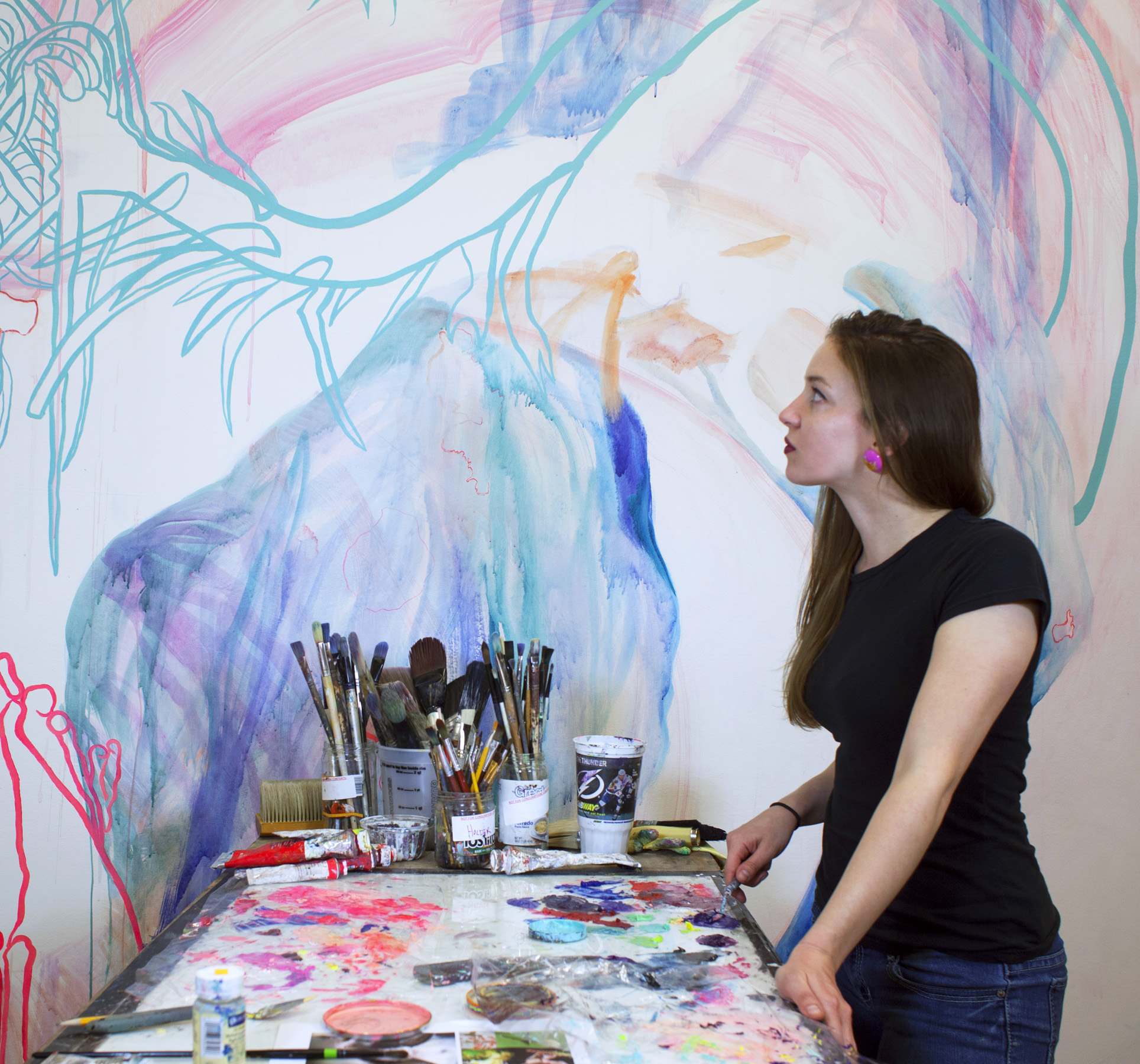Above photo: For Kate Alboreo, teaching is something she has always dreamed of doing, but she also has to keep other jobs because of the unpredictability that comes with being an adjunct professor. Andrea Perez | The Crow’s Nest
By Andrea Perez
As a fine arts undergrad, Kate Alboreo knew that she’d find joy in teaching.
Preparing for it, however, has become a persistent race against the clock. Now a 30-year old graphic design adjunct professor, the artist juggles to find time for lecture planning while attempting to provide students with a space to discover their creative mark.
“What I love to do is really challenging and it’s a taxing profession. There’s a performative aspect of it that is physically, mentally and emotionally exhausting,” Alboreo said.
On Mondays and Wednesdays Alboreo wakes up anywhere between 5:30 and 6 a.m. in order to make the drive from Seminole Heights to USF St. Petersburg. She teaches until 8:45 p.m.
Alboreo teaches at the Tampa campus and works at the Contemporary Art Museum in Tampa the remaining days of the week while filling in part time at a restaurant on the weekends.
“As an adjunct and as a new teacher, I spend a lot of time developing lessons, demos and lectures,” Alboreo said.
Although Alboreo is paid for working 28 hours a week, which includes 4 office hours, she spends roughly 10 to 20 hours planning lessons. As an adjunct with a master’s degree, she makes $3,000 per course but still relies on her two other jobs to cover daily expenses and student loan payments.
“I have to keep other jobs because adjuncting is so unpredictable,” she said. “Last semester I thought I was going to have three classes and then one of them didn’t get enough enrollment. So when I don’t get enough classes I have to kind of hold on to something else.”
When asked about time management and its effect on class performance, she was quick to emphasize that although her dedication is strongly consistent, not getting paid enough for the time spent on planning lectures is frustrating.
Alboreo said she would rather spend time preparing quality lessons for her students than splitting her time across her other jobs.
“I’m paying more in my student loans right now that I pay for rent and utilities combined,” she said. “Just because I don’t get paid enough for the time that I spend working doesn’t mean that they should have less of an educational experience.”
Alboreo, who earned her master’s degree at USF St. Petersburg in May, is the first faculty member in the Graphic Arts Program who teaches painting concepts to graphic design students.
On Mondays, after reviewing the instructions during a typical drawing class, she’ll play a Spotify playlist curated by the students and walk around the classroom giving feedback.
“Learning by doing is huge. I try to avoid too much demoing. I’m interested in saying to the student ‘here’s a hint of what you need to do and now go do it.’ Then I walk around the classroom and help each one individually,” she said.
Alboreo doesn’t feel strongly for, or against the adjuncts’ efforts for higher pay, but says that job security is a probable gain for all of them in the coming union election.
“Though unions are in theory a great idea, I saw too many instances of union employees losing out on benefits the company was able to offer non-union employees, and rarely were they paid any better,” Alboreo said.
“The best thing I saw most unions offering was job security — it is tough to fire union employees.” she said. “Because working as an adjunct is so fickle any way, and largely dependent on student enrollment. I’m not sure that would do much good.”



